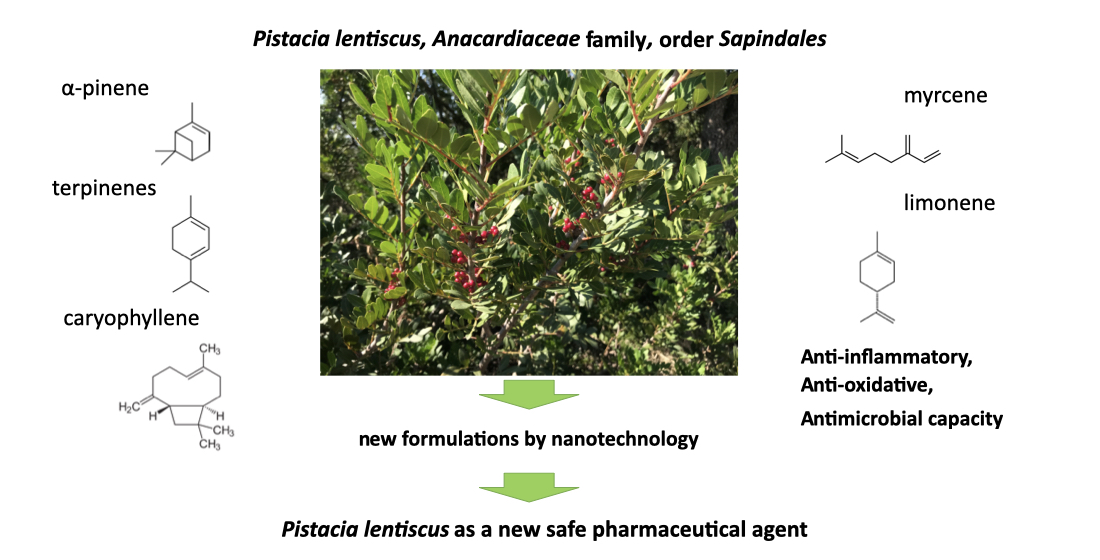Preprint
Review
Pistacia lentiscus: From Phytopharmacology to Scientific Explanations on Its Anti-Inflammatory and Antimicrobial Capacity
Altmetrics
Downloads
494
Views
500
Comments
0
A peer-reviewed article of this preprint also exists.
This version is not peer-reviewed
Submitted:
19 February 2021
Posted:
22 February 2021
You are already at the latest version
Alerts
Abstract
There is an increasing interest in revisiting plants for drug discovery proving scientifically their role as remedies. Pistacia lentiscus (PL) is a wild-growing shrub rich in terpenoids, which are pharmacological appealing. The more recurrent components in the oil are represented by α-pinene, terpinene, caryophyllene, limonene, and myrcene. High concentration of polyphenols enriches the extracts. PL-extracts showed in vitro and in animal model strong anti-inflammatory and anti-oxidative activities. The anti-inflammatory activity mainly occurs due to inhibition of NF-kB pathway or directly toward the proinflammatory cytokines, or arachidonic acid cascade against COX-2 and LOX. The antimicrobial activity of PL essential oil and extracts includes among others Staphylococcus aureus, Escherichia coli, periodontal bacteria and Candida sp.. In conclusion, the biological properties, and particularly the anti-inflammatory and anti-microbial capacity, propose PL as a new safe pharmaceutical agent.

Keywords:
Subject: Medicine and Pharmacology - Immunology and Allergy
Copyright: This open access article is published under a Creative Commons CC BY 4.0 license, which permit the free download, distribution, and reuse, provided that the author and preprint are cited in any reuse.
MDPI Initiatives
Important Links
© 2024 MDPI (Basel, Switzerland) unless otherwise stated










